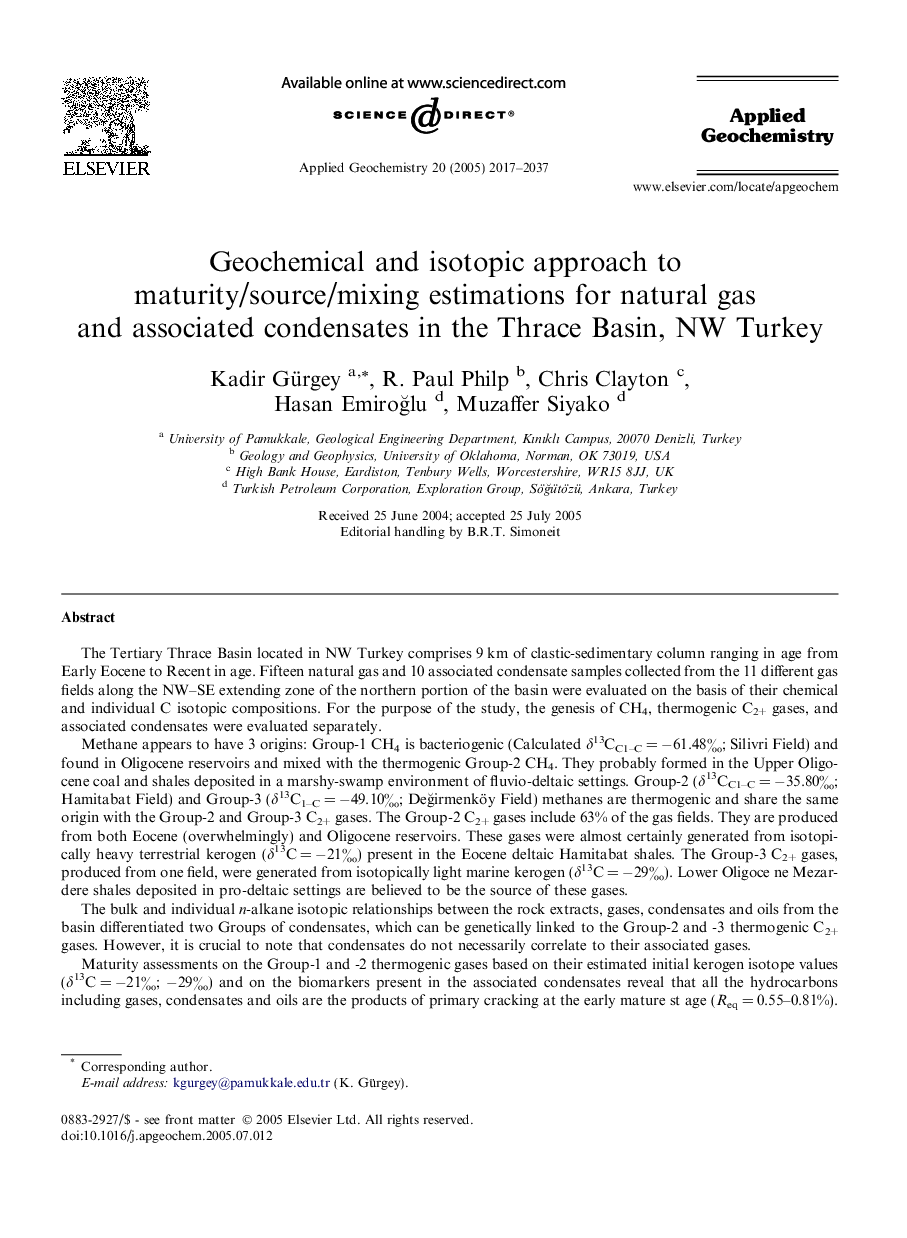| Article ID | Journal | Published Year | Pages | File Type |
|---|---|---|---|---|
| 4437840 | Applied Geochemistry | 2017 | 21 Pages |
The Tertiary Thrace Basin located in NW Turkey comprises 9 km of clastic-sedimentary column ranging in age from Early Eocene to Recent in age. Fifteen natural gas and 10 associated condensate samples collected from the 11 different gas fields along the NW–SE extending zone of the northern portion of the basin were evaluated on the basis of their chemical and individual C isotopic compositions. For the purpose of the study, the genesis of CH4, thermogenic C2+ gases, and associated condensates were evaluated separately.Methane appears to have 3 origins: Group-1 CH4 is bacteriogenic (Calculated δ13CC1–C = −61.48‰; Silivri Field) and found in Oligocene reservoirs and mixed with the thermogenic Group-2 CH4. They probably formed in the Upper Oligocene coal and shales deposited in a marshy-swamp environment of fluvio-deltaic settings. Group-2 (δ13CC1–C = −35.80‰; Hamitabat Field) and Group-3 (δ13C1–C = −49.10‰; Değirmenköy Field) methanes are thermogenic and share the same origin with the Group-2 and Group-3 C2+ gases. The Group-2 C2+ gases include 63% of the gas fields. They are produced from both Eocene (overwhelmingly) and Oligocene reservoirs. These gases were almost certainly generated from isotopically heavy terrestrial kerogen (δ13C = −21‰) present in the Eocene deltaic Hamitabat shales. The Group-3 C2+ gases, produced from one field, were generated from isotopically light marine kerogen (δ13C = −29‰). Lower Oligoce ne Mezardere shales deposited in pro-deltaic settings are believed to be the source of these gases.The bulk and individual n-alkane isotopic relationships between the rock extracts, gases, condensates and oils from the basin differentiated two Groups of condensates, which can be genetically linked to the Group-2 and -3 thermogenic C2+ gases. However, it is crucial to note that condensates do not necessarily correlate to their associated gases.Maturity assessments on the Group-1 and -2 thermogenic gases based on their estimated initial kerogen isotope values (δ13C = −21‰; −29‰) and on the biomarkers present in the associated condensates reveal that all the hydrocarbons including gases, condensates and oils are the products of primary cracking at the early mature st age (Req = 0.55–0.81%). It is demonstrated that the open-system source conditions required for such an early-mature hydrocarbon expulsion exist and are supported by fault systems of the basin.
